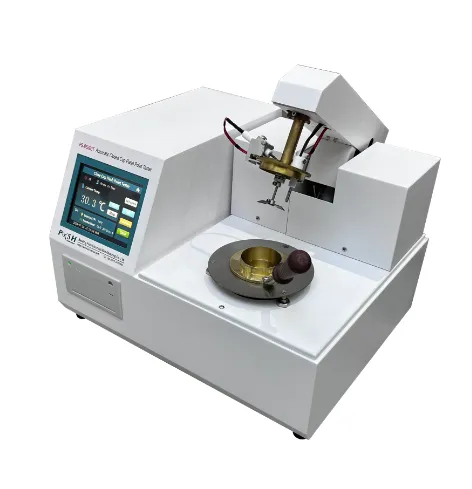TEL:
+86-0312-3189593
 English
English

Telephone:0312-3189593

Email:sales@oil-tester.com

-
 Afrikaans
Afrikaans -
 Albanian
Albanian -
 Amharic
Amharic -
 Arabic
Arabic -
 Armenian
Armenian -
 Azerbaijani
Azerbaijani -
 Basque
Basque -
 Belarusian
Belarusian -
 Bengali
Bengali -
 Bosnian
Bosnian -
 Bulgarian
Bulgarian -
 Catalan
Catalan -
 Cebuano
Cebuano -
 China
China -
 China (Taiwan)
China (Taiwan) -
 Corsican
Corsican -
 Croatian
Croatian -
 Czech
Czech -
 Danish
Danish -
 Dutch
Dutch -
 English
English -
 Esperanto
Esperanto -
 Estonian
Estonian -
 Finnish
Finnish -
 French
French -
 Frisian
Frisian -
 Galician
Galician -
 Georgian
Georgian -
 German
German -
 Greek
Greek -
 Gujarati
Gujarati -
 Haitian Creole
Haitian Creole -
 hausa
hausa -
 hawaiian
hawaiian -
 Hebrew
Hebrew -
 Hindi
Hindi -
 Miao
Miao -
 Hungarian
Hungarian -
 Icelandic
Icelandic -
 igbo
igbo -
 Indonesian
Indonesian -
 irish
irish -
 Italian
Italian -
 Japanese
Japanese -
 Javanese
Javanese -
 Kannada
Kannada -
 kazakh
kazakh -
 Khmer
Khmer -
 Rwandese
Rwandese -
 Korean
Korean -
 Kurdish
Kurdish -
 Kyrgyz
Kyrgyz -
 Lao
Lao -
 Latin
Latin -
 Latvian
Latvian -
 Lithuanian
Lithuanian -
 Luxembourgish
Luxembourgish -
 Macedonian
Macedonian -
 Malgashi
Malgashi -
 Malay
Malay -
 Malayalam
Malayalam -
 Maltese
Maltese -
 Maori
Maori -
 Marathi
Marathi -
 Mongolian
Mongolian -
 Myanmar
Myanmar -
 Nepali
Nepali -
 Norwegian
Norwegian -
 Norwegian
Norwegian -
 Occitan
Occitan -
 Pashto
Pashto -
 Persian
Persian -
 Polish
Polish -
 Portuguese
Portuguese -
 Punjabi
Punjabi -
 Romanian
Romanian -
 Russian
Russian -
 Samoan
Samoan -
 Scottish Gaelic
Scottish Gaelic -
 Serbian
Serbian -
 Sesotho
Sesotho -
 Shona
Shona -
 Sindhi
Sindhi -
 Sinhala
Sinhala -
 Slovak
Slovak -
 Slovenian
Slovenian -
 Somali
Somali -
 Spanish
Spanish -
 Sundanese
Sundanese -
 Swahili
Swahili -
 Swedish
Swedish -
 Tagalog
Tagalog -
 Tajik
Tajik -
 Tamil
Tamil -
 Tatar
Tatar -
 Telugu
Telugu -
 Thai
Thai -
 Turkish
Turkish -
 Turkmen
Turkmen -
 Ukrainian
Ukrainian -
 Urdu
Urdu -
 Uighur
Uighur -
 Uzbek
Uzbek -
 Vietnamese
Vietnamese -
 Welsh
Welsh -
 Bantu
Bantu -
 Yiddish
Yiddish -
 Yoruba
Yoruba -
 Zulu
Zulu
Јан . 20, 2025 05:13
Back to list
gas chromatography detector types
Exploring the intricate world of gas chromatography detectors unveils a realm where precision meets innovation. An effective gas chromatography (GC) system is defined not just by the column, but significantly by the detector chosen. Detectors are the nerve centers of GC systems, translating chemical separations into actionable data. Understanding the types of detectors available and their unique capabilities can drastically improve analytical results and operational efficiency.
5. Photoionization Detector (PID) Offering high sensitivity to volatile organic compounds (VOCs), the PID uses high-energy photons to ionize chemicals in the gas phase. This is particularly useful in environmental monitoring and industrial hygiene, where the need to quantify trace levels of VOCs rapidly is paramount. 6. Nitrogen-Phosphorus Detector (NPD) Designed specifically for detecting nitrogen- or phosphorus-containing compounds, the NPD is a specialized version of the FID. This detector is particularly effective for pharmaceutical and environmental applications, allowing for the precise analysis of drugs, herbicides, and pesticides. Each detector offers unique advantages, and the choice hinges on the specific application requirements, such as sensitivity, selectivity, and the nature of the analytes. When selecting a detector, consider the analyte type, required sensitivity, sample matrix, and potential interferences. The correct pairing of detector with application not only enhances accuracy and reproducibility but also optimizes operational efficiency. In essence, the selection of a gas chromatography detector is a critical decision point in the analytical workflow. Through understanding detector mechanisms and their applications, laboratories can significantly enhance their analysis capabilities. The future of gas chromatography lies in the continued innovation and integration of detector technology, promising new levels of sensitivity and specificity that will further empower researchers and industries alike.


5. Photoionization Detector (PID) Offering high sensitivity to volatile organic compounds (VOCs), the PID uses high-energy photons to ionize chemicals in the gas phase. This is particularly useful in environmental monitoring and industrial hygiene, where the need to quantify trace levels of VOCs rapidly is paramount. 6. Nitrogen-Phosphorus Detector (NPD) Designed specifically for detecting nitrogen- or phosphorus-containing compounds, the NPD is a specialized version of the FID. This detector is particularly effective for pharmaceutical and environmental applications, allowing for the precise analysis of drugs, herbicides, and pesticides. Each detector offers unique advantages, and the choice hinges on the specific application requirements, such as sensitivity, selectivity, and the nature of the analytes. When selecting a detector, consider the analyte type, required sensitivity, sample matrix, and potential interferences. The correct pairing of detector with application not only enhances accuracy and reproducibility but also optimizes operational efficiency. In essence, the selection of a gas chromatography detector is a critical decision point in the analytical workflow. Through understanding detector mechanisms and their applications, laboratories can significantly enhance their analysis capabilities. The future of gas chromatography lies in the continued innovation and integration of detector technology, promising new levels of sensitivity and specificity that will further empower researchers and industries alike.
Previous:
Latest news
-
Testing Equipment Industry Sees Major Advancements in 2025: Smart & Precision Technologies Lead the WayNewsJun.06,2025
-
Applications of Direct Current Generators in Renewable Energy SystemsNewsJun.05,2025
-
Hipot Tester Calibration and Accuracy GuidelinesNewsJun.05,2025
-
Digital Circuit Breaker Analyzer Features and BenefitsNewsJun.05,2025
-
Benefits of Real-Time Power Quality Monitoring Devices for Industrial EfficiencyNewsJun.05,2025
-
Earth Fault Loop Testing in High-Rise Building Electrical SystemsNewsJun.05,2025



